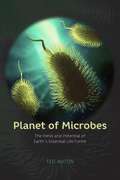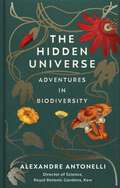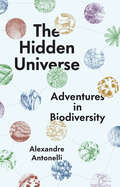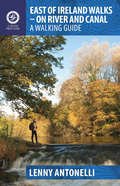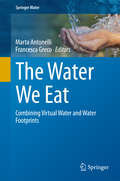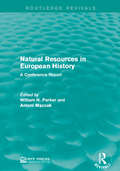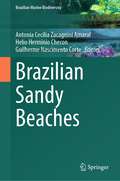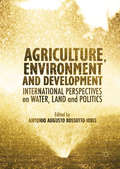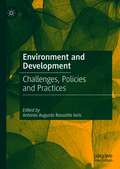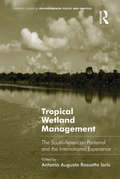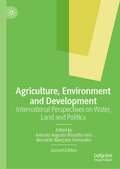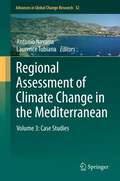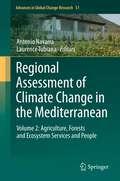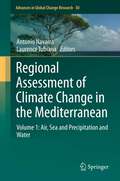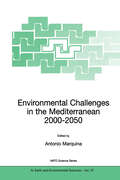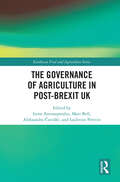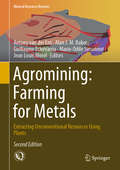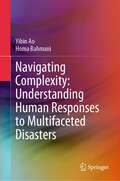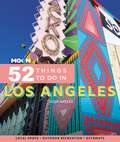- Table View
- List View
Regulating Gas Liberalization: A Comparative Study on Unbundling and Open Access Regimes in the US, Europe, Japan, South Korea and Taiwan
by Anton Ming-Zhi GaoThis is the first book to analyze, in a comparative way, the detailed development of the unbundling and open access regimes across three continents. It is the author’s contention that these two legal forms should be more widely implemented than they are at present. In each of five substantial chapters – on the United States, Europe, Japan, South Korea, and Taiwan – the author first focuses on the proposed or current laws and industrial practices on service, account, functional, legal and ownership unbundling and independent system operator, and then on those of different open access regimes (mainly including regulated and negotiated third party access), insofar as they have been developed in each location. Using empirical evidence from Europe, the United States, and Japan that a well-formulated and comprehensive liberalization can bring about more advantages than disadvantages, he shows how well-designed unbundling and open access regimes may accomplish the following: • inject much-needed competition into gas exploration, exploitation, import, production, and retailing; • reform and re-regulate non-competitive sectors such as transportation, distribution, and storage; • balance potential conflicts between energy security and competition; and • support interests such as environmental protection, energy rights, safety, and consumer protection.
The Development of a Comprehensive Legal Framework for the Promotion of Offshore Wind Power (Energy and Environmental Law and Policy Series)
by Anton Ming-Zhi Gao, Chien-Te FanThere is clearly an urgent need worldwide to increase the share of renewable energy in the overall energy supply as rapidly as possible. With a well-developed and proven feasible technology, offshore wind power has come to the fore as the most promising means of achieving this goal. However, fragmented authorities and procedures may pose tremendous challenges to the development of an integrated legal framework for offshore wind and the complex installation and grid interconnections it requires. This book surveys and analyses the features essential for the development of such a framework, drawing on the experience of ten countries that have such schemes in place – France, Germany, the United Kingdom, Italy, Norway, the United States, Australia, China, Korea, and Taiwan. Discussing the impact of technological, economic, spatial, and market issues on the legal framework, eleven key policymakers in their respective countries contribute chapters that together reveal the contours of a strong and sound legal framework that serves to enable and facilitate the efficient application of policy initiatives and subsidies. Topics and issues raised and examined include the ways a sound legal framework addresses the following aspects of offshore wind power development: - license schemes; - construction of turbines; - infrastructure of grid, construction harbor, and vessels; - environmental health and safety regulations; and - loan and finance risk. The contributors show that a carefully planned mix of incentives and supplementary schemes is indispensable. The essays are drawn on the presentations and papers offered at the International Conference on a Comprehensive Legal Framework for the Development of Offshore Wind Power Around the World held in Taiwan in August 2016. As a major new contribution to the debate on the importance of a legal framework for offshore wind power and grid interconnections, this book will prove indispensable to lawyers, policymakers, officials, and academics concerned with the management of sea space to include the wind power necessary to achieve and sustain renewable energy goals.
Planet of Microbes: The Perils and Potential of Earth's Essential Life Forms
by Ted AntonWe live in a time of unprecedented scientific knowledge about the origins of life on Earth. But if we want to grasp the big picture, we have to start small—very small. That’s because the real heroes of the story of life on Earth are microbes, the tiny living organisms we cannot see with the naked eye. Microbes were Earth’s first lifeforms, early anaerobic inhabitants that created the air we breathe. Today they live, invisible and seemingly invincible, in every corner of the planet, from Yellowstone’s scalding hot springs to Antarctic mountaintops to inside our very bodies—more than a hundred trillion of them. Don’t be alarmed though: many microbes are allies in achieving our—to say nothing of our planet’s—health. In Planet of Microbes, Ted Anton takes readers through the most recent discoveries about microbes, revealing their unexpected potential to reshape the future of the planet. For years, we knew little about these invisible invaders, considering them as little more than our enemies in our fight against infectious disease. But the more we learn about microbes, the more it’s become clear that our very lives depend on them. They may also hold the answers to some of science’s most pressing problems, including how to combat a warming planet, clean up the environment, and help the body fight off a wide variety of diseases. Anton has spent years interviewing and working with the determined scientists who hope to harness the work of microbes, and he breaks down the science while also sharing incredible behind-the-scenes stories of the research taking place everywhere from microbreweries to Mars. The world’s tiniest organisms were here more than three billion years before us. We live in their world, and Planet of Microbes at last gives these unsung heroes the recognition they deserve.
Planet of Microbes: The Perils and Potential of Earth's Essential Life Forms
by Ted AntonWe live in a time of unprecedented scientific knowledge about the origins of life on Earth. But if we want to grasp the big picture, we have to start small—very small. That’s because the real heroes of the story of life on Earth are microbes, the tiny living organisms we cannot see with the naked eye. Microbes were Earth’s first lifeforms, early anaerobic inhabitants that created the air we breathe. Today they live, invisible and seemingly invincible, in every corner of the planet, from Yellowstone’s scalding hot springs to Antarctic mountaintops to inside our very bodies—more than a hundred trillion of them. Don’t be alarmed though: many microbes are allies in achieving our—to say nothing of our planet’s—health. In Planet of Microbes, Ted Anton takes readers through the most recent discoveries about microbes, revealing their unexpected potential to reshape the future of the planet. For years, we knew little about these invisible invaders, considering them as little more than our enemies in our fight against infectious disease. But the more we learn about microbes, the more it’s become clear that our very lives depend on them. They may also hold the answers to some of science’s most pressing problems, including how to combat a warming planet, clean up the environment, and help the body fight off a wide variety of diseases. Anton has spent years interviewing and working with the determined scientists who hope to harness the work of microbes, and he breaks down the science while also sharing incredible behind-the-scenes stories of the research taking place everywhere from microbreweries to Mars. The world’s tiniest organisms were here more than three billion years before us. We live in their world, and Planet of Microbes at last gives these unsung heroes the recognition they deserve.
Planet of Microbes: The Perils and Potential of Earth's Essential Life Forms
by Ted AntonWe live in a time of unprecedented scientific knowledge about the origins of life on Earth. But if we want to grasp the big picture, we have to start small—very small. That’s because the real heroes of the story of life on Earth are microbes, the tiny living organisms we cannot see with the naked eye. Microbes were Earth’s first lifeforms, early anaerobic inhabitants that created the air we breathe. Today they live, invisible and seemingly invincible, in every corner of the planet, from Yellowstone’s scalding hot springs to Antarctic mountaintops to inside our very bodies—more than a hundred trillion of them. Don’t be alarmed though: many microbes are allies in achieving our—to say nothing of our planet’s—health. In Planet of Microbes, Ted Anton takes readers through the most recent discoveries about microbes, revealing their unexpected potential to reshape the future of the planet. For years, we knew little about these invisible invaders, considering them as little more than our enemies in our fight against infectious disease. But the more we learn about microbes, the more it’s become clear that our very lives depend on them. They may also hold the answers to some of science’s most pressing problems, including how to combat a warming planet, clean up the environment, and help the body fight off a wide variety of diseases. Anton has spent years interviewing and working with the determined scientists who hope to harness the work of microbes, and he breaks down the science while also sharing incredible behind-the-scenes stories of the research taking place everywhere from microbreweries to Mars. The world’s tiniest organisms were here more than three billion years before us. We live in their world, and Planet of Microbes at last gives these unsung heroes the recognition they deserve.
Planet of Microbes: The Perils and Potential of Earth's Essential Life Forms
by Ted AntonWe live in a time of unprecedented scientific knowledge about the origins of life on Earth. But if we want to grasp the big picture, we have to start small—very small. That’s because the real heroes of the story of life on Earth are microbes, the tiny living organisms we cannot see with the naked eye. Microbes were Earth’s first lifeforms, early anaerobic inhabitants that created the air we breathe. Today they live, invisible and seemingly invincible, in every corner of the planet, from Yellowstone’s scalding hot springs to Antarctic mountaintops to inside our very bodies—more than a hundred trillion of them. Don’t be alarmed though: many microbes are allies in achieving our—to say nothing of our planet’s—health. In Planet of Microbes, Ted Anton takes readers through the most recent discoveries about microbes, revealing their unexpected potential to reshape the future of the planet. For years, we knew little about these invisible invaders, considering them as little more than our enemies in our fight against infectious disease. But the more we learn about microbes, the more it’s become clear that our very lives depend on them. They may also hold the answers to some of science’s most pressing problems, including how to combat a warming planet, clean up the environment, and help the body fight off a wide variety of diseases. Anton has spent years interviewing and working with the determined scientists who hope to harness the work of microbes, and he breaks down the science while also sharing incredible behind-the-scenes stories of the research taking place everywhere from microbreweries to Mars. The world’s tiniest organisms were here more than three billion years before us. We live in their world, and Planet of Microbes at last gives these unsung heroes the recognition they deserve.
The Hidden Universe: Adventures in Biodiversity
by Alexandre AntonelliWe don't know what we've got until it's gone...This brief, lucid book by the Director of Science at Royal Botanical Gardens takes you on an unforgettable tour of the natural world, showing how biodiversity - the rich variety of life in the world and in our own backyards - provides both the source and the salvation of our existence. Combining inspiration stories and the latest scientific research, Alex Antonelli reveals the wonders of biodiversity at a genetic, species and ecosystem level - what it is, how it works, and why it's the most important tool in our battle against climate change.A deeper understanding of biodiversity has never been more important, as the slow violence of habitat loss has put the fate of almost one-fifth of all species on Earth at risk of extinction in the coming decades. These building blocks of life form a network that underpins almost every aspect of our lives, providing invaluable sources of food, medicine, fibre, clothing, building material and more. With simplicity and clarity, The Hidden Universe shows you not only what's at stake, but what can be done (and is already being done) to protect and restore biodiversity around the world. It marks the arrival of a bold new voice in popular science.
The Hidden Universe: Adventures in Biodiversity
by Alexandre AntonelliAn unforgettable exploration of the natural world and the concept of biodiversity—what it is, why it matters, and how we as individuals can work to preserve it. We are now living in an environmental emergency. As climate change, habitat loss, and other threats have placed almost one-fifth of all species on Earth at risk of extinction in the coming decades, a deeper understanding of biodiversity has never been more important. Biodiversity encompasses the rich variety of all life on Earth—the building blocks of life that provide invaluable sources of food, medicine, clothing, building materials, and more. Marking the arrival of a bold new voice in popular science, The Hidden Universe shows readers what’s at stake in the fight to protect and restore biodiversity, but also what can and should be done now to protect our planet and ourselves for the future. As director of science at one of the world’s largest research organizations in plant and fungal sciences, Brazilian-born scientist Alexandre Antonelli is ideally suited to reveal the wonders of biodiversity at a genetic, species, and ecosystem level—what biodiversity is, how it works, and why it is the most important tool in our battle against climate change. Antonelli offers recommendations for large-scale political changes, as well as smaller, practical steps that readers can implement in their own lives and homes. With Antonelli as our guide, The Hidden Universe helps us imagine a future where biodiversity is not just preserved but cherished.
East of Ireland Walks: On River And Canal (A Walking Guide)
by Lenny AntonelliRiver and canal walks can have special appeal, the scenery always changing due to flowing water, weirs, locks and the changing countryside. Ireland's rivers and canals are rich in wildlife, history and folklore, and many can be explored on mostly flat, little-used trails. These hidden corridors of wildness through rural and urban Ireland reveal remnants of a time when trade, transport and industry in Ireland revolved around water rather than roads. Lenny Antonelli introduces some of the best river and canal trails in the east and east midlands, from short strolls to a five-day trek along the Barrow. These walks encompass iconic Irish rivers such as the Liffey, the Boyne and the Nore; and waterways such as the Grand and Royal Canals. There are lesser-known trails here too, from ravines in the Slieve Bloom Mountains to the young rivers of Wicklow’s deep wooded valleys. For those new to walking, these trails form easy introductions. For experienced walkers, they provide new and less-trodden paths through places of unexpected beauty. • Also available: 'Dublin & Wicklow: A Walking Guide' by Helen Fairbairn
The Water We Eat: Combining Virtual Water and Water Footprints (Springer Water)
by Marta Antonelli Francesca GrecoThis book pursues a comprehensive, multidisciplinary approach in order to analyze the relationship between water and food security. It demonstrates that most of the world’s economies lack sufficient water resources to secure their populations’ food requirements and are thus virtual importers of water. One of the most inspiring cases, which this book is rooted in, is Italy: the third largest net virtual water importer on earth. The book also shows that the sustainability of water depends on the extent to which societies recognize and take into account its value and contribution to agricultural production. Due to the large volumes of water required for food production, water and food security are in fact inextricably linked. Contributions from leading international experts and scholars in the field use the concepts of virtual water and water footprints to explain this relationship, with an eye to the empirical examples of wine, tomato and pasta production in Italy. This book provides a valuable resource for all researchers, professionals, policymakers and everyone else interested in water and food security.
Natural Resources in European History: A Conference Report (Routledge Revivals)
by Antoni Mączak and William N. ParkerNatural Resources in European History pulls together several papers from the Bellagio Conference on Natural Resources and Economic Development which took place in 1977. Originally published in 1978, this report focuses on papers exploring the history of natural resources in Continental Europe presenting research on how resources were traded, collected and depleted between the fifteenth and nineteenth century. This title will be of interest to students of Environmental Studies or with an interest in Environmental History.
Brazilian Sandy Beaches (Brazilian Marine Biodiversity)
by Antonia Cecilia Zacagnini Amaral Helio Herminio Checon Guilherme Nascimento CorteMore than 4000 beaches distributed along the Brazilian coastline are one of the country's main assets. They harbor endemic and diverse biota and provide numerous goods and services essential to human populations. However, they are under increasing pressure, trapped between the impacts of climate change and human activities in the terrestrial and marine environment, and the knowledge about their environmental characteristics and biodiversity is still insufficient to ensure their preservation. This book is the first-ever comprehensive work about Brazil's sandy beaches addressing their physical, ecological, and social aspects. It was written by an interdisciplinary group of leading Brazilian researchers from different regions of the country and also had the contribution of a few international experts. The information synthesized in this book is accessible to anyone who wants to know more about Brazilian coastal biodiversity and represents a significant step towards conserving Brazilian sandy beaches, their biodiversity, and ecosystem services.
Agriculture, Environment and Development: International Perspectives on Water, Land and Politics
by Antonio A.R IorisThis book deals with past legacies and emerging challenges associated with agriculture production, water and environmental management, and local and national development. It offers a critical interpretation of the tensions associated with the failures of mainstream regulatory regimes and the impacts of global agri-food chains. The various chapters include conceptual and empirical material from research carried out in Brazil, India and Europe. The assessment takes into account the dilemmas faced by farmers, companies, policy-makers and the international community related to growing food demand, water scarcity and environmental degradation. The book also questions most government reactions to those problems that tend to reproduce old, productivist approaches and are normally under the powerful influence of global corporations, mega-supermarkets and investment funds. Its overall message is that the trajectory of agriculture, rural development and environmental management are integral elements of the broader search for justice and novel socio-ecological thinking.
Environment and Development: Challenges, Policies and Practices
by Antonio Augusto Rossotto IorisThis book provides a comprehensive overview of emerging challenges facing different social groups, policy-makers and the international community related to economic growth, social development and environmental change, social inclusion and regional development. The book undertakes a critical assessment of the tensions associated with the failures of mainstream regulatory approaches and impacts of social and economic policies whilst widening the discussion on the interface between the expansion of the socio-environmental demands, equity and justice. These are crucial challenges, of great importance today and of equal relevance to the Global North and South. The book explores one of the main contradictions of development, the simplification of assessments and narrow consideration of alternatives. Taking this dilemma as its departure point, it goes on to examine the justification, trends and limitations of Western-based development and possible alternatives to fundamentally modify the basis and the rationale of the development process. It considers theoretical and lived experiences of development, paying attention to multiple scales, local realities and economic frontiers. Contributing authors explore policy recommendations and discuss effective practical tools for determining the values different people hold for ecosystem services and territorial resources. They cover the monitoring of change in the provision of ecosystem services that might increase the well-being of vulnerable groups as well as strategies to promote innovation and integrated, equitable and sustainable development.
Tropical Wetland Management: The South-American Pantanal and the International Experience
by Antonio Augusto Rossotto IorisRecent scientific development and politico-institutional experiences related to the conservation of the South-American Pantanal are explored in this book in relation to what is happening in other tropical wetland areas of international importance such as the Everglades in North America and the Okavango in Africa, as well as considering the European experience. An interdisciplinary group of authors examines the need to establish a constructive dialogue between scientists, policy-makers and local stakeholders and outline a future research agenda, including consideration of the impacts of climate change and the pressures of regional development, for wetland management.
Agriculture, Environment and Development: International Perspectives on Water, Land and Politics
by Antonio Augusto Rossotto Ioris Bernardo Mançano FernandesThe Second Edition of this book is completely revised and updated throughout providing an overview of current challenges faced within the area of Agri-food in relation to policymaking, ecological conservation and socio-environmental justice. Including a range of new chapters, the book explores some of the conceptual and analytical gaps that are presented by current approaches to this topic. The series of interconnected chapters offers a critical reinterpretation of the tensions associated with the failures of mainstream regulatory regimes, land and resource grabbing, and the impacts of global agri-food chains at local, regional and inter-sectoral scales. The book also examines past legacies and emerging challenges associated with agriculture modernisation, politico-spatial disputes, climate change, social movements, gender, ethnicity and education. It likewise addresses the transformative potential of different combinations of biophysical, socio-technical and socio-spatial practices of food sovereignty.
Regional Assessment of Climate Change in the Mediterranean: Volume 3: Case Studies (Advances in Global Change Research #52)
by Antonio Navarra and Laurence TubianaThis is the third volume of a three-volume final report, which thoroughly describes, synthesizes and analyzes the results of the four-year Integrated Research Project CIRCE – Climate Change and Impact Research: Mediterranean Environment, funded by the EU 6th Framework Programme. Conducted under the auspices of the National Institute of Geophysics and Volcanology in Rome, Italy, the study was designed to predict and to quantify the physical impacts of climate change in the Mediterranean, and to assess the most influential consequences for the population of the region.
Regional Assessment of Climate Change in the Mediterranean: Volume 2: Agriculture, Forests and Ecosystem Services and People (Advances in Global Change Research #51)
by Antonio Navarra and Laurence TubianaVolume 2 of a three-volume final report thoroughly describes, synthesizes and analyzes the results of the four-year Integrated Research Project CIRCE – Climate Change and Impact Research: Mediterranean Environment, funded by the EU 6th Framework Programme. Conducted under the auspices of the National Institute of Geophysics and Volcanology in Rome, Italy, CIRCE was designed to predict and to quantify the physical impacts of climate change in the Mediterranean, and to assess the most influential consequences for the region’s population. This volume incorporates Parts 3 and 4 of the report, reviewing current knowledge of observed climate variability and trends in the Mediterranean, and including descriptions of available temperature and precipitation station and gridded data sets.
Regional Assessment of Climate Change in the Mediterranean: Volume 1: Air, Sea and Precipitation and Water (Advances in Global Change Research #50)
by Antonio Navarra and Laurence TubianaVolume 1 of a three-volume final report describes, synthesizes and analyzes the results of the four-year Integrated Research Project CIRCE – Climate Change and Impact Research: Mediterranean Environment, funded by the EU 6th Framework Programme. Conducted under the auspices of the National Institute of Geophysics and Volcanology in Rome, Italy, CIRCE was designed to predict and to quantify the physical impacts of climate change in the Mediterranean, and to assess the most influential consequences for the region’s population. This volume incorporates the first two parts of the report, reviewing current knowledge of observed climate variability and trends in the Mediterranean, and including descriptions of available temperature and precipitation station and gridded data sets.
Environmental Challenges in the Mediterranean 2000–2050: Proceedings of the NATO Advanced Research Workshop on Environmental Challenges in the Mediterranean 2000–2050 Madrid, Spain 2–5 October 2002 (NATO Science Series: IV: #37)
by AntonioMarquinaThis book addresses six key factors that will affect environmental policies in the Mediterranean region during the next fifty years: population growth, climate change, soil erosion and desertification, water scarcity, food production, and urbanization and pollution. The authors assess these as potential sources of violent conflict. The interdisciplinary approach makes this a relevant and useful reference for a broad range of professionals, specialists and researchers.
The Governance of Agriculture in Post-Brexit UK (Earthscan Food and Agriculture)
by Irene Antonopoulos Matt Bell Aleksandra 268 Avoski Ludivine PetetinThis book provides a multidisciplinary analysis of the impact of Brexit on British agriculture and associated areas, discussing the Common Agricultural Policy and the Agriculture Act 2020. The Brexit referendum provoked new debates and questions over the future of agriculture in Britain and the potential positive and negative impacts of Brexit on both farmers and consumers. These debates, as well as the ensuing proposals relevant to the Agriculture Act 2020, have exposed the multidimensional effects of Brexit when it comes to agriculture. With a focus on profitability, the rights of farmers, environmental protection, as well as animal welfare, this book brings together an interdisciplinary analysis of the future of British agriculture in post-Brexit Britain. More specifically, it addresses the criticisms over the Common Agriculture Policy, presents an analysis of the Agriculture Act 2020, and considers suggestions for future developments. Through this analysis, the book suggests a way towards the future, with a positive outlook towards a competitive and sustainable agriculture that will satisfy the needs of farmers and consumers while ensuring environmental protection, animal welfare, and rural development. This book will be of great interest to students and scholars of food and agricultural policy and politics, agroecology and rural development, as well as policymakers involved in Britain’s post-Brexit environmental policy.
The Governance of Agriculture in Post-Brexit UK (Earthscan Food and Agriculture)
by Irene Antonopoulos Matt Bell Aleksandra Čavoški Ludivine PetetinThis book provides a multidisciplinary analysis of the impact of Brexit on British agriculture and associated areas, discussing the Common Agricultural Policy and the Agriculture Act 2020. The Brexit referendum provoked new debates and questions over the future of agriculture in Britain and the potential positive and negative impacts of Brexit on both farmers and consumers. These debates, as well as the ensuing proposals relevant to the Agriculture Act 2020, have exposed the multidimensional effects of Brexit when it comes to agriculture. With a focus on profitability, the rights of farmers, environmental protection, as well as animal welfare, this book brings together an interdisciplinary analysis of the future of British agriculture in post-Brexit Britain. More specifically, it addresses the criticisms over the Common Agriculture Policy, presents an analysis of the Agriculture Act 2020, and considers suggestions for future developments. Through this analysis, the book suggests a way towards the future, with a positive outlook towards a competitive and sustainable agriculture that will satisfy the needs of farmers and consumers while ensuring environmental protection, animal welfare, and rural development. This book will be of great interest to students and scholars of food and agricultural policy and politics, agroecology and rural development, as well as policymakers involved in Britain’s post-Brexit environmental policy.
Agromining: Extracting Unconventional Resources Using Plants (Mineral Resource Reviews)
by Antony van der Ent Alan J. M. Baker Guillaume Echevarria Marie-Odile Simonnot Jean Louis MorelThis second and expanded edition of the first book on agromining (phytomining) presents a comprehensive overview of the metal farming & recovery of the agromining production chain. Agromining is an emerging technology that aims to transform the extraction of sources of target elements not accessible by traditional mining and processing techniques. Agromining, which is based on sustainable development, uses hyperaccumulator plants as 'metal crops' farmed on sub-economic soils or minerals wastes to obtain valuable target elements. This volume is edited and authored by the pioneers in the rapidly expanding field of agromining and presents the latest insights and developments in the field. This book provides in-depth information on the global distribution and ecology of hyperaccumulator plants, their biogeochemical pathways, the influence of rhizosphere microbes, the physiology and molecular biology of hyperaccumulation, as well as aspects of propagation and conservation of these unusual plants. It describes the agronomy of metal crops and opportunities for incorporating agromining into rehabilitation and mine closure, including test cases for agromining of nickel, cobalt, manganese, arsenic, selenium, cadmium, zinc, thallium, rare earth elements and platinum group elements. Since the first edition was published, there have successful nickel agromining field trials in the tropics (in Malaysia and Guatemala), and these are presented in a dedicated case study chapter. Other new chapters focus on the processing of bio-ore for elements other than nickel, such as rare earth elements and cadmium, and on agromining from industrial wastes such as tailings, and industrial by-products and sites. Furthermore, the book features two new chapters that provide a comprehensive assessment of accumulation a very wide range elements from the Periodic Table in various plant species around the globe, and a chapter on practical methods for discovery of hyperaccumulator plant species in the field and in the herbarium. This book is of interest to environmental professionals in the minerals industry, government regulators, and academics.
Navigating Complexity: Understanding Human Responses to Multifaceted Disasters
by Yibin Ao Homa BahmaniThis thought-provoking book unravels the intricate interplay between human behavior and disasters, weaving a rich narrative that transcends traditional boundaries. Embark on a captivating exploration of human responses to multifaceted disasters with this book. Unveiling the human psyche and the intricate web of emotions that intertwine with disaster events, this book offers a profound understanding of human responses to multifaceted disasters.Written with precision and meticulous research, this book captivates scholars, practitioners, and policymakers alike. Its multidimensional perspectives offer valuable insights for disaster management, urban planning, sociology, and public health, transcending disciplinary boundaries.
Moon 52 Things to Do in Los Angeles: Local Spots, Outdoor Recreation, Getaways
by Teena ApelesFrom the market you haven&’t hit yet to the desert getaway you keep meaning to plan, experience something new right here at home with Moon 52 Things to Do in Los Angeles.Cool things to do in and around the city: Check out the art galleries in West Adams, hop on a Jeepney in Historic Filipinotown, and learn a craft from local artisans. Sample street tacos on Sunset, enjoy a platter of Ethiopian food, or experience a drag-show brunch. Bike or skate along the LA River, search for sea life in the tide pools of San Pedro, or hike to the Griffith or Mount Wilson observatories Day trips and weekend getaways: Take the Pacific Surfliner Train from Union Station to Solana Beach, kayak on Lake San Marcos, or wander Ojai&’s nature preserves. Rent a golf cart on Catalina Island, shop and dine along Santa Barbara&’s State Street , or immerse yourself in desert artwork in the Coachella Valley Experiences broken down by category: Find to do lists for each season, activities for kids, outdoor adventures, arts and culture, food and drinks, live entertainment, and more A local's advice: Longtime Angeleno author Teena Apeles knows the city's ins and outs, from unexpected street art to hidden local history Inspirational full-color photos throughoutEasy-to-scan planning tips: Addresses, nearby attractions, and tips for avoiding the crowds if you're heading to a popular spot What are you doing this weekend? Try something new with Moon 52 Things to Do in Los Angeles. About Moon Travel Guides: Moon was founded in 1973 to empower independent, active, and conscious travel. We prioritize local businesses, outdoor recreation, and traveling strategically and sustainably. Moon Travel Guides are written by local, expert authors with great stories to tell—and they can't wait to share their favorite places with you. For more inspiration, follow @moonguides on social media.


